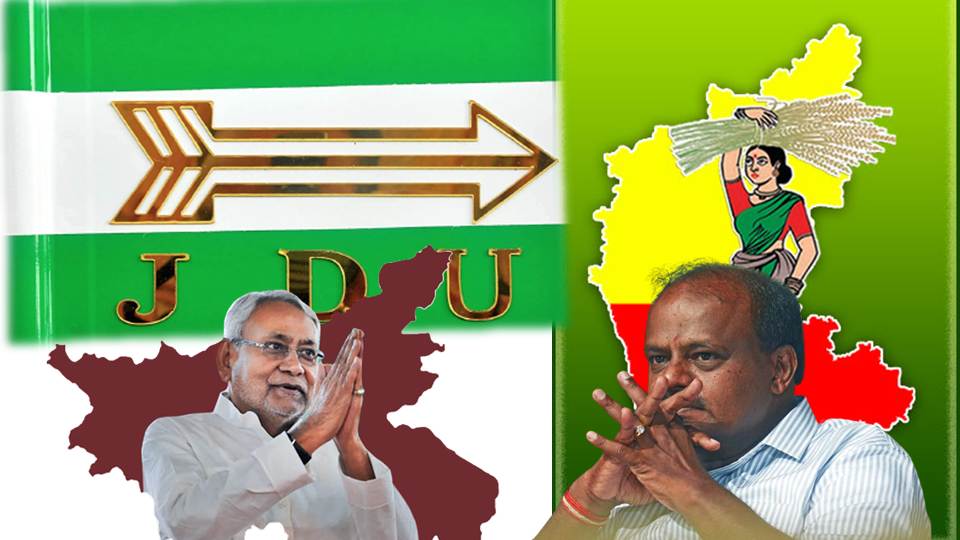India is an electoral democracy, the world’s largest democracy, where a political party is registered in every block and every ward of the country. The quest for power and electoral victory has been a top priority of the leaders, due to which there have been several fallouts and from time to time new parties have been constituted.
Therefore, it is often said that if you want to learn complex political history, read India’s, and if you want to understand the workings of the political sphere, analyse the different states of India and the current politics.
It holds true, and there are certainly multiple examples to prove the same. Although the Congress Party dominated post-independence India, there were numerous political forces such as the Socialist Party, the Communist Party of India, the Bharatiya Janata Dal, and the Swatantra Party, among others. The one to challenge the might of Congress for the first time was Janata Dal, whose offshoots are currently battling existential crisis.
Also read: Complete abandonment of Nitish and a new CM face, Amit Shah blows the conch for Bihar
The history that decided the future
As soon as the focus shifted away from Congress, several regional forces came into picture, which later evolved into a viable political force that ruled multiple states of India, and the breeding ground for all was the same: Janata Dal, founded in 1977 as a coalition.
In 1988, the Janata Party and a number of smaller parties merged to form the Janata Dal (JD). This acted as a stronger, renewed opposition against Congress and the United Front.
It was in June 1996–April 1997 when JD’s Deve Gowda formed a UF coalition government with himself as the prime minister. However, the stint was short-lived.
The major fallout that led to the formation of the Janata Dals
Then comes the history of Nitish Kumar, who was initially associated with the same Janata Party. However, in 1994, Nitish Kumar along with George Fernandes left the JD and floated their own Samata Party. There was another blow in 1997, when Lalu Prasad Yadav, a leader of the Janata Dal, withdrew from the party and formed his own Rashtriya Janata Dal with his followers.
In 1999, the Janata Dal, which was formed as a counter to Congress, was in a coalition with Congress, and the party underwent a major split over the issue of the Janata Dal’s alliance with the Bharatiya Janata Dal-led National Democratic Alliance (NDA).
The faction that opposed the alliance was led by former Prime Minister Deve Gowda, who formed a new party named as Janata Dal (Secular). The JD(S) went on to become a political force in its home state of Karnataka and some parts of Kerala. And what remained was known as the Janata Dal (United).
JD(U) was headed by Sharad Yadav. In 2003, JD(U) merged with Samata Party and other smaller political entities and formed a new JD(U), which catered to all of its leaders.
Fernandes became the first president of the new party, Sharad Yadav headed the parliamentary board, and Nitish Kumar went on to form government after government. However, it seems for Nitish Kumar, the reconstituted JD(U) came as a curse, and it harmed his credibility.
Also read: Nitish has a master plan to snatch maximum number of seats from his opposition friends
Nitish Kumar, his JD (U), and credibility
The newly formed JD(U) resisted Lalu Yadav’s rise in Bihar and dominated the political spectrum for many years, a saga that continues to this day. Nitish Kumar catered to different caste groups and won over lower-caste Hindus and a majority Muslim population over time.
Whatever the mandate, Nitish Kumar remained at the helm of affairs, and whenever he saw a looming threat over his chair, he switched the alliance. Be it 2003, 2005, 2010 or 2017, Nitish Kumar was the chief minister of Bihar with ally BJP.
In 2013, Kumar broke the alliance with the BJP and joined the RJD, just to trace it back to 2017. He came back, fought again with the BJP, was reduced to the third number in the state, but again managed to become the CM, just to switch to the RJD.
With almost no major development projects post his first term and jumping ships, Kumar has not only sealed the end of his political career but there is also an end road to the JD(U).
Also read: Kumaraswamy tried his best to get inside the NDA but was shown the boot
Another Janata Dal down south marred with Parivarvad
After Deve Gowda floated JD (S), he paid special attention to social engineering and encashed the support from his own community, that is, Vokkaligga. Gowda put his bet on the Vokkaliga community and has been constantly trying to expand the party’s base among Muslims and the Kuruba community.
However, the party had its strongest hold in the old Mysuru region, which comprises 10 out of the 30 districts of the state. However, the loyal base is rapidly eroding. The vote share has been at an all-time low, and in 2019, the JD(S) even lost its fortresses. Gowda lost his Tumkur seat, while his grandson lost in Mandya, another another bastion of the Janata Dal (Secular).
The major reason cited by the political analysts is parivarvaad. It seems that the party’s primary interest lies in protecting the family, and this has left the Vokkaliga votes up for grabs, as the BJP seems to be making inroads. Kumaraswamy may not stand the test of the next election.
Support TFI:
Support us to strengthen the ‘Right’ ideology of cultural nationalism by purchasing the best quality garments from TFI-STORE.COM
